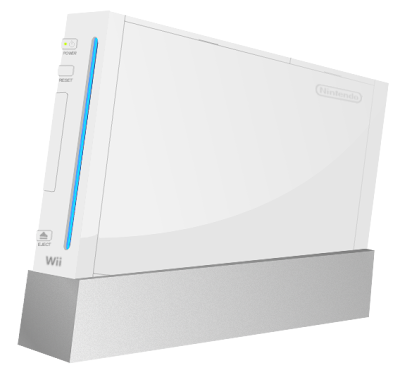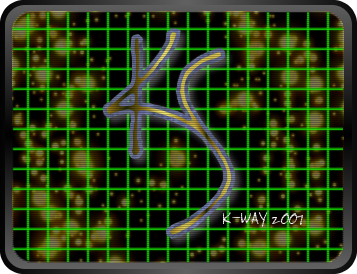Ok, yesterday I finished the 19 whopping paragraphs for my American Revolution Timeline...due tomorrow. I still don't have the 4 paragraphs for four different people...I'm thinking Paul Revere, Sam Adams, maybe George Washington, and what the heck, I'll go with Patrick Henry. I also need to draw 10 pictures for 10 of the 19 events. Yep, that behind. So, here and enjoy my work:
Proclamation of 1763:
The French and Indian War was finally over, but a new danger had now risen. Tensions were rising between the Indians and the colonists. England had to respond to this problem. How did they do this? They established the Proclamation of 1763. The proclamation ordered colonists to stay away from the land occupied by the Indians. This land was to be reserved for the Natives and the Natives only. But some colonists refused to obey the proclamation and settled west of the colonies. Because of this, British forces were brought over from England to enforce the law.
Quartering Act (1765):
British troops came to enforce the Proclamation of 1763. They forced colonists who moved west to settle back in the colonies. All these soldiers had to have a place to stay, so the Quartering Act was established in 1765. Colonists had to give soldiers living quarters as well as food, fuel, beer, and transportation. This all had to be supplied by the colonists. Of course, the colonists refused to do this because they would have to waste money on the soldiers, and soon enough, the Quartering Act died down.
Stamp Act (1765):
Because the English were in debt from the French and Indian war, they had to find a way to get the money back. They thought it was fair for colonists to help pay back the debt. They passed the Stamp Act in 1765 the same year as the Quartering Act. The Stamp Act made colonists pay a tax on all printed goods. This included newspapers, pamphlets, playing cards, and even dice. In order to show that they paid the tax, colonists had to have a stamp printed on their goods to show that it was legal. Many of the colonists boycotted these paper items. Also, representatives from nine of the colonies demanded that Parliament repeal the Stamp Act. In 1766, a year after the act was established, it was repealed by Parliament.
Sons of Liberty (organized in 1765):
While the Stamp Act was still in effect, secret societies were formed in protest. They were formed mostly in New York and Massachusetts in 1765. The Sons of Liberty in Boston were organized by Sam Adams. These societies sometimes used violence to frighten tax collectors and persuade them into quitting their job. They also persuaded many to refuse buying stamps. The Stamp Act was later repealed, and because of them, many colonists became patriots and did not follow the laws set by Parliament.
Townshend Acts (1767):
The British were still in debt form the French and Indian War. Charles Townshend, the new British Prime Minister, organized and established in June of 1767 an indirect tax on items like glass, paper, tea, paint, and lead. This tax not only paid for the French and Indian War, but also paid for military costs and salaries of colonial governors. The tax was small and indirect because it was added to the price of these items at the sea ports, so colonists would never know that the items cost more than they should—or so they thought. Somehow, the colonists found out about this tax, and like the Stamp Act, they boycotted the overpriced goods. Francis Bernard, governor of Massachusetts at the time, broke up the Massachusetts legislature and asked troops to restore order. In 1768 the British troops came to keep the peace. The Townshend Acts were repealed two years later in March of 1770.
Boston Massacre (1770):
Conflict between England and the colonies was rising rapidly. On the night of March 5th, 1770, an English soldier guarding the Boston Customs House hit a boy on the head with his gun. Church bells rang and soon many colonists came to see what was happening. Some began to ridicule and hurt the soldiers with rocks, snowballs, and sticks. Captain Thomas Preston came with eight more British soldiers. What happened next is still unclear, and you'll hear different stories from different sources. Most likely through all the confusing shouting, a soldier thought he heard the word "fire" and fired his weapon. Then the soldiers might have heard this and started firing too. Five colonists died. Seven were wounded. The British sentry was taken to court. They were found not guilty, but many colonists were still angry at the soldiers after the trial.
Boston Tea Party (1773):
Parliament passed the Tea Act in 1773, which allowed the British East Indies Company complete control over the American Tea business. Colonists could only buy tea from this company. The colonists didn't like how Parliament established this act without hearing what they had to say about it, even though the tea was cheaper this way. The Sons of Liberty organized the Boston Tea Party which took place on December 16th, 1773. About 60 local Bostonians dressed as Indians headed towards three ships in the harbor that carried crates of tea. They were the Dartmouth, the Eleanor, and the Beaver. 342 chests of tea were opened and dumped into the harbor. This caused even more unrest between the colonies and England. The colonists weren't going to get away with this incredibly large amount of tea wasted.
Intolerable Acts (1774):
In response to the Boston Tea Party, the Coercive Acts were established throughout March, May, and June in 1774. The acts did many things. They closed the Port of Boston and imposed military rule over the entire colony of Massachusetts, which meant that its legislature and town meetings were suspended. They also reintroduced the Quartering Act. Sam Adams and the Sons of Liberty stirred up colonial response to these laws. They called the acts the Intolerable Acts because they didn't think they could tolerate them. On the days when the acts went into effect, flags were flown at half mast. Minutemen in towns around Boston were preparing for possible battle. Other colonies worked to protest, even though they wouldn't really be affected. It was time for something to be done. The colonies would have to unite.
First Continental Congress (1774):
Because of the Coercive Acts, the colonies set aside their differences and worked together. The First Continental Congress was formed September 5th of 1774 in Philadelphia and would continue until October 26th. Some of the people who attended were Sam Adams, John Adams, George Washington, and Patrick Henry. They drew up the Declaration of Rights which listed freedoms the colonists should have, as well as appeals to the King. They also called a boycott on all trade with England. They decided to hold a Second Continental Congress if things didn't work out between them and England. The response: King George III did not agree with this at all.
Battles of Lexington and Concord (1775):
Parliament rejected all petitions sent to them by the First Continental Congress. At the time, British troops were ordered by General Thomas Gage to capture Sam Adams and John Hancock as well as siege stores of colonial gunpowder in Concord. On the evening and night of April 18th, 1775 Paul Revere, William Dawes and Samuel Prescott rode by horseback to Lexington and Concord to warn the Minutemen and other colonists that the British were coming. Revere and Dawes were captured, but Prescott made it to Concord to warn colonists to move the stores. The morning of April 19th, less than 70 Minutemen were out on the Lexington green. Soon enough, they were face to face with British troops. Someone fired. No one knew who or which side fired first, but when that shot was fired, the war took off. Eight colonists died and ten were wounded. The British soldiers marched to Concord, where they found few guns and stores. In anger, they set fire to some of the buildings. The Minutemen started to attack as the British soldiers retreated to Boston. They acted like snipers, shooting from behind trees and buildings. The British had suffered over 250 casualties by the time they reached Boston. Fewer than 100 colonists were killed or wounded. The American Revolution had officially begun.
Second Continental Congress (1775):
The Second Continental Congress was held May 10th of 1775. The leaders of the Congress had to decide how to react to the battles that were going on. They came up with the following: they decided not to break from Great Britain and created a Continental Army that would be commanded by George Washington. Later on July 5th, they signed the Olive Branch Petition as a peace treaty to the King. They did not want to loose any more lives. Even later in November, they learned that King George III rejected the petition angrily. Now ready with the Continental Army, the colonists were more prepared for war.
Battle of Bunker Hill (1775):
Fighting in the colonies had spread since Lexington/Concord. Minutemen held Boston under siege. The British were planning on taking Charleston, so colonial forces rushed to build defenses on Breeds Hill and Bunker Hill, which were less than half a mile away from England's target. The British were surprised to see the colonists already there on the hills. The colonists were protected from attack fairly well, but unfortunately they were low on gunpowder. To conserve gunpowder, the colonial commander ordered troops not to fire until they could "see the whites of their eyes." The majority of the fighting occurred on Breeds Hill. After turning back several assaults, colonists were forced to retreat due to the shortage of ammunition. Even though the British won the battle, they suffered over 2,000 casualties. Colonists only suffered about 400. The Battle of Bunker Hill showed the British that colonists were a force to be reckoned with.
Declaration of Independence (1776):
Colonial leaders were starting to realize it would be better to break off from England altogether. So, in June of 1776, the Second Continental Congress developed a committee that would focus on writing a document stating why America should be free from Great Britain. The members of the committee were John Adams, Ben Franklin, Thomas Jefferson, Robert R. Livingston, and Roger Sherman. Jefferson was the main author and wrote the document down. There are three main ideas in the Declaration of Independence. First, all men possess unalienable rights, which include "life, liberty, and the pursuit of happiness." This was inspired by the writings of Enlightenment philosophers. Second, King George III violated the colonists' rights, which includes passing unfair laws, taxation without representation, and the presence of a large British army. Finally, the colonists had a right to break away from England. This refers to the Enlightenment idea of the social contract, which states that rulers should protect the rights of their citizens. The Declaration was signed and approved on July 4th, 1776. America now had broken all ties with Great Britain. They now became the United States of America.
Battle of Trenton: (1776):
General Howe wanted to settle in New York City over the winter because he thought the war would be ending soon. He left New Jersey in the hands of the Hessians, who are German mercenaries hired to help fight for the British. Washington decided to attack the Hessians in Trenton, New Jersey. Howe's "break" allowed Washington to gather reinforcements. Some 2,400 soldiers and Washington crossed the Delaware River on the night of Christmas, 1776. The next morning when they landed, they marched to Trenton and caught 900 Hessians. The battle lasted less than an hour. There were only five American casualties. This victory boosted the Patriots' spirits.
Battle of Saratoga (1777):
British troops were to take back Fort Ticonderoga, as part of a plan to cut New England off from the rest of the colonies. General John Burgoyne would take back the fort, and then march south to Albany, New York. Another force would march to Albany from Lake Ontario, and General Howe's troops were in New York City, and would march north to get to Albany. In early of July of 1777 Fort Ticonderoga was recaptured. Everything seemed to be going well. But that was not true. For one thing, colonists chopped down trees to slow the progress of Burgoyne's troops. And for another, Howe decided to take Philadelphia as he came over to Albany (this would be the Battle of Brandywine Creek, and Howe's forces would win). In addition, the army coming from Lake Ontario was behind as well. Burgoyne did not know of these delays, and was the first to reach Albany. Burgoyne's troops were badly outnumbered by Patriots. General Horatio Gates and Officer Benedict Arnold drove back the British attack and led bold charges. Burgoyne surrendered on October 17th, 1777 to Gates. This American victory greatly boosted foreign support from countries like France and Spain. It was a turning point in the American Revolution.
Valley Forge (1777):
The Continental Army was running terribly low on supplies. This made France and Spain's entry into the war perfect timing. It was December of 1777. Washington's troops were settled in Valley Forge, Pennsylvania. These were terrible times for the Continental Army. They were running short on food and clothing, catching diseases, suffering from malnutrition, and troops were becoming restless. This was all about to change. In February of 1778 a veteran Prussian army officer called Baron Friedrich von Steuben came to help the troops. He spoke no English, but with the way he led and trained the troops with respect and fear, he taught the Continental Army basic military skills and turned them into well-trained soldiers.
Articles of Confederation (1777):
The members of the Second Continental Congress thought it was best for all thirteen colonies to be run under one central government, and not thirteen separate ones. Some thought that government would be way too powerful. A Committee of Thirteen was appointed by the Congress on June 12th, 1776. Over the course of a month, these thirteen people came up with a national constitution: the Articles of Confederation. It stated that a new Confederation Congress would become the central government and each state would have one vote in the Congress. This government didn't have a president or a court system. This Confederation Congress had only limited powers. It could borrow money, negotiate with other countries and American Indians, make coins, and ask states for soldiers or money, but that was the state's choice. They couldn't be forced. The Articles of Confederation were passed on November 15th, 1777. It was ratified by all the states (two weren't sure but gave in later) and the first national government of the United States went into effect.
Battle of Yorktown (1781):
British general Charles Cornwallis wanted to control the South more, so he planned to attack a small Patriot force led by Marquis de Lafayette near Yorktown, Virginia. Washington saw this as a chance to trap Cornwallis. While Comte de Grasse's French fleet of ships kept any British ships from coming into Chesapeake Bay, Comte de Rochambeau, a French general, and George Washington headed south with their troops and surrounded Cornwallis and his army. Washington and Rochambeau had 16,000 troops. Cornwallis had less than half that. The Patriots held Yorktown under siege for weeks. The British navy made futile attempts to rescue Cornwallis' army. Comte de Grasse and his fleet drove them away. It was early October and Washington was planning a major attack on Cornwallis' weakened troops. Cornwallis surrendered before that happened. When they came to an agreement some days later, the British marched out of Yorktown in defeat on October 20th, 1781. The war was over.
Treaty of Paris (1783):
Because the war had pretty much ended, America and England now had to negotiate. A committee from the Continental Congress began to do this. The American delegates were John Adams, Ben Franklin, John Jay, and Henry Laurens. Franklin played a key role and was influential in the peace talks. After two years, the two countries had come to an agreement, and the Treaty of Paris of 1783 showed that England recognized that the United States were now independent and self-run. The treaty also set the borders. The northern border was the Great Lakes, the western was the Mississippi River, and the south was the 30° north latitude line. Americans could settle west of the original colonies and soldiers returned to their families now that the battles were fought. America was now a free and independent country.
Ta da!


 Program Site:
Program Site:  The magnificence of the iPod Nano.
The magnificence of the iPod Nano. And if you crop the left side, you get this:
And if you crop the left side, you get this:  Sweet. GIMP and all other Photoshop or Photoshop-like programs ROCK!
Sweet. GIMP and all other Photoshop or Photoshop-like programs ROCK! But I don't know what it costs yet. That could be a problem. Unless I come up with a way to save some
But I don't know what it costs yet. That could be a problem. Unless I come up with a way to save some 
 The Windows Vista logo. I'm still not sure if I'll upgrade...
The Windows Vista logo. I'm still not sure if I'll upgrade...



